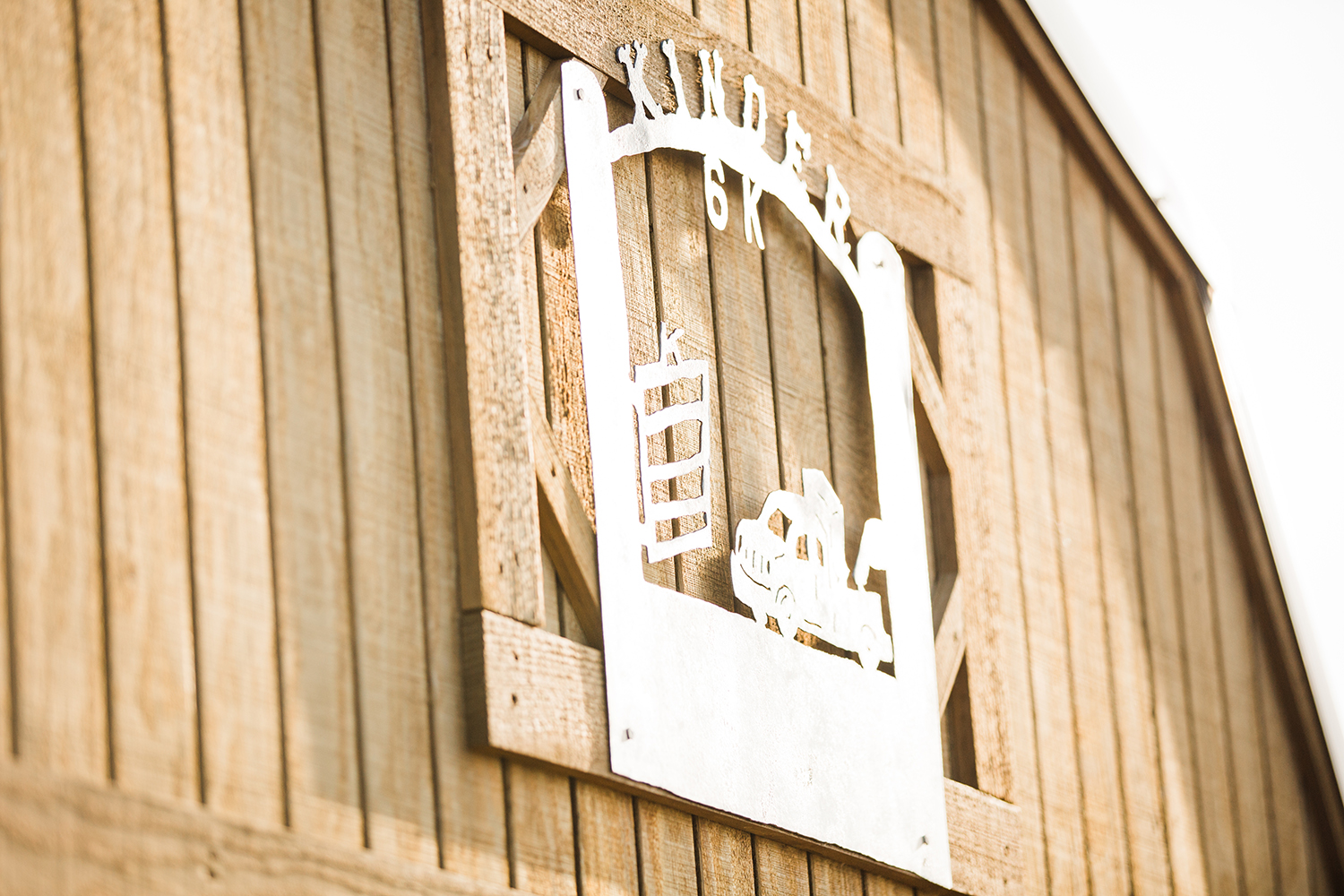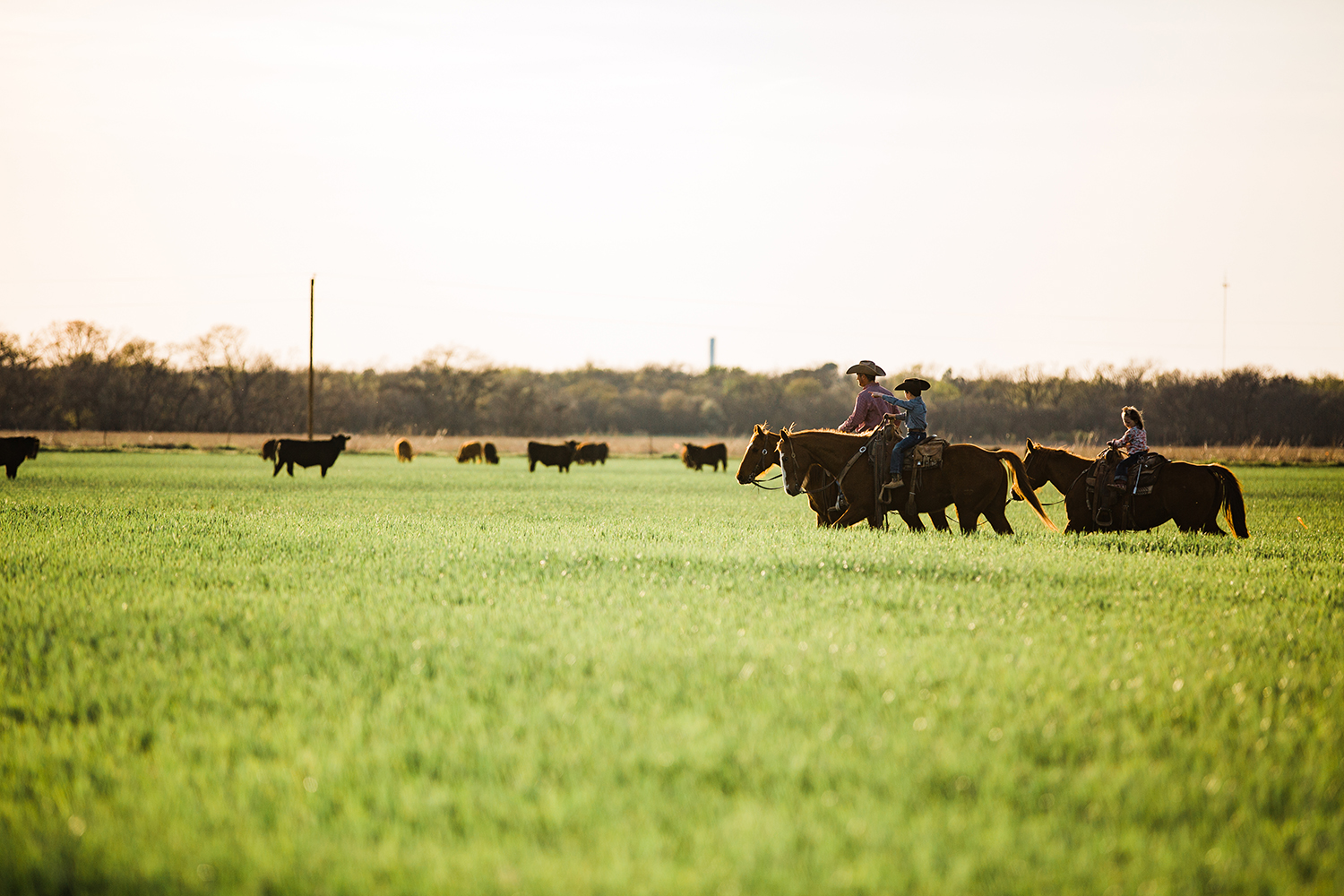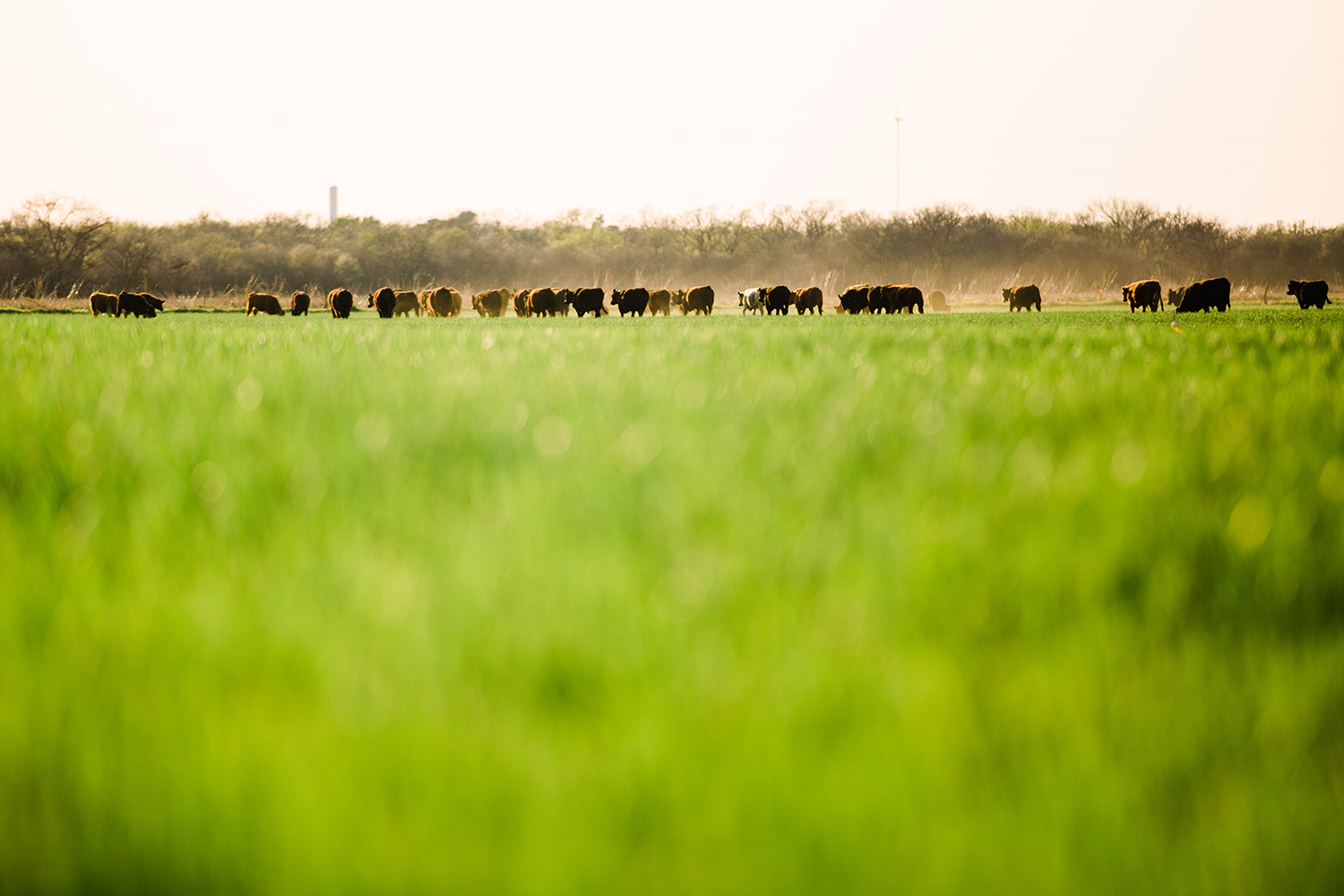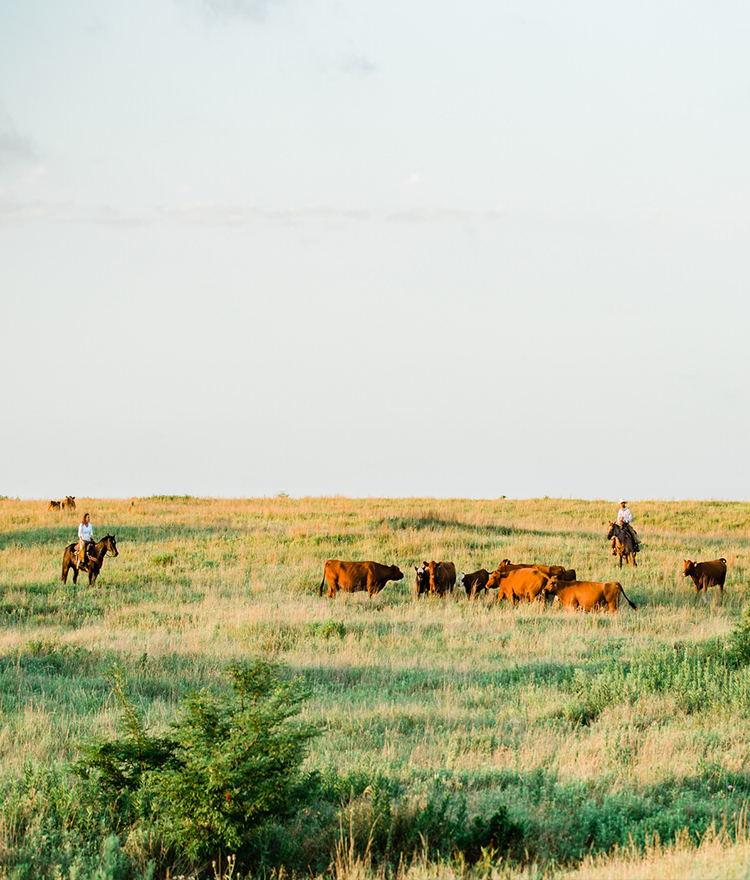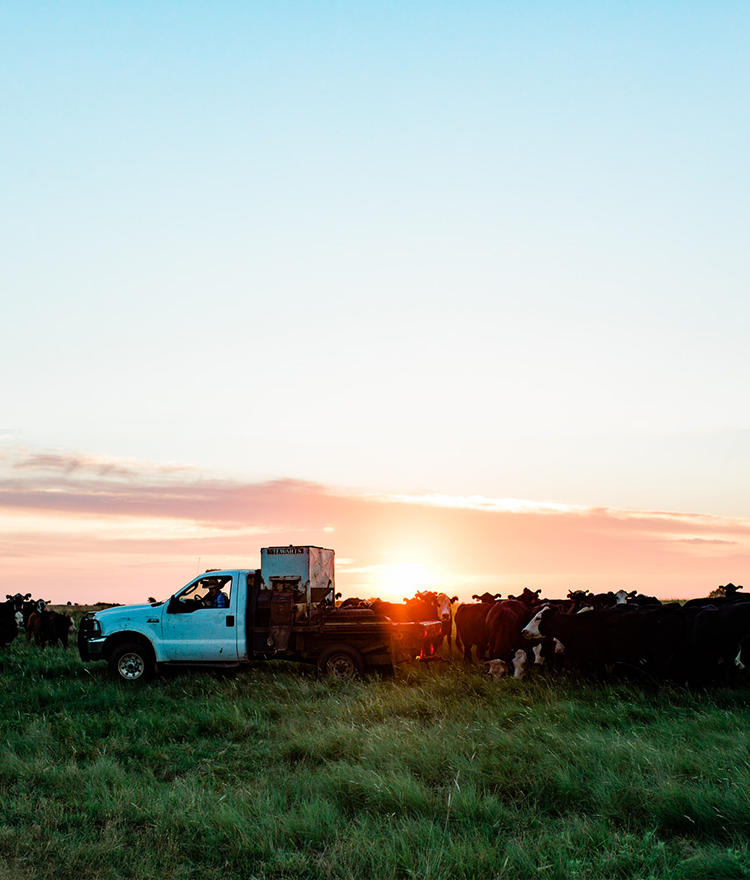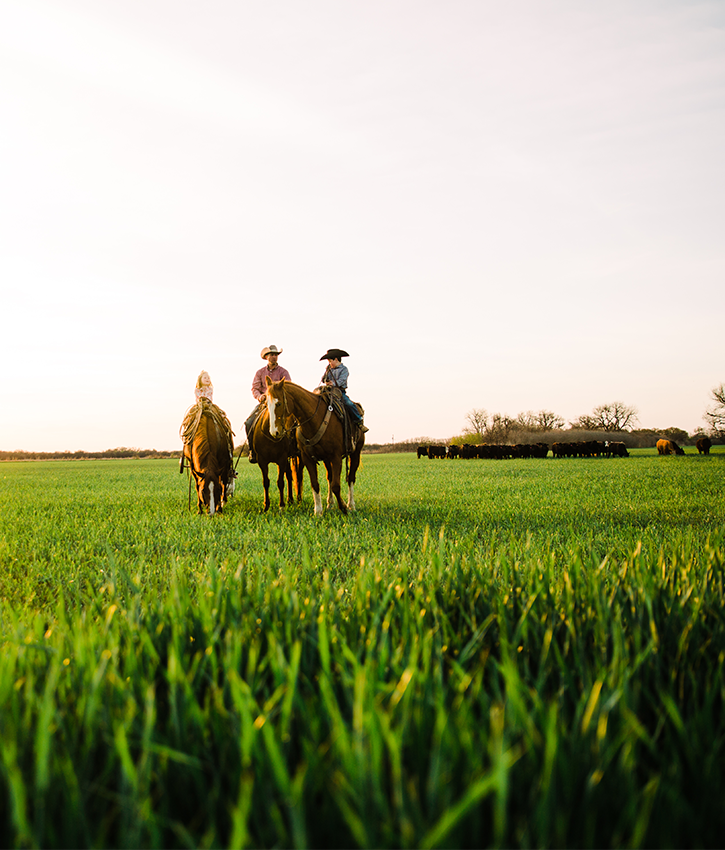Jeremy Kinder
A family legacy to be proud of encapsulates the goals of the Kinder family. Being aware of all that is entrusted to them -- the land, our livestock -- is important to Jeremy, his wife and children.
Meet the Kinder Family
The Kinder Family is all about carrying on a legacy that started six generations ago with Jeremy’s wife, Katy’s, family. This legacy includes continually working to improve a their cow herd and custom grazing stock for other ranchers. They want to do the best job they possibly can, further the beef community and enjoying living a life that they love.
Meet Your Rancher:
WHAT DOES A TYPICAL DAY LOOK LIKE?
Our day starts with coffee. Then it’s a balance--feeding horses, getting children ready for school and making breakfast. Then, once the children are out the door, it’s time to truly get started on the ranch--feeding cows, working with our yearlings or doing operational tasks.
How has technology changed the way you RANCH now compared to earlier generations?
For us, it’s a precision farming approach that means better utilization of chemical applications and seed to ensure we are being strategic with our inputs. Back in the day, technology meant an old marker out in front of the tractor. Today we have access to GPS that gets within an inch or six inches of overlap. It is absolutely a step towards progress and with additional technology, we can continue to be a better steward of the land that we're entrusted.
What management practices do you implement to ensure that you're being cognizant of water use and taking care of your land as well as the livestock? Are there any specific practices that you put in place?
With cattle care, we implement a very
specific and strategic vaccination program in the spring and the fall, and also
with vaccinating calves. We take the health and maintenance of our cattle very
seriously to ensure we are raising a high quality product.
As
far as water and resources are concerned, we do not over-graze our pastures. We
want to ensure we do not have to haul additional forage to cattle in the
winter, but rather enhance with a protein supplement. Our location is blessed
as far as water is concerned. We work hard to leave the ground water alone.
There are limited acres where we use groundwater in order to water the cattle.
In years of drought, we haul water and make adjustments, but that's part of the
paradigm of ranching--going with the ebbs and flows and the challenges that
we're presented with.
"A family legacy to be proud of encapsulates the goals of our family. Being aware of all that is entrusted to us - the land, our livestock - is important to me, my wife and my children." - Jeremy Kinder
What would you say sustainability means to you and your family?
Sustainability is doing the very best job we can with what's in front of us. It means that if I do my job, my ranch and our brand -- the 6K brand -- will be here for years to come because of the job we've done managing the country we're entrusted.
If you could explain one aspect of agriculture or the beef industry to someone who isn’t familiar with agriculture, what would it be?
The use of antibiotics in cattle is no different than your dog getting sick and simply needing an antibiotic to get them over respiratory problems. We do the same thing with cattle. If we don't treat that animal, it is not going to be productive and will expire. Antibiotics are an important tool to our livelihood.
Last question, what is your favorite cut of beef and how do you like it prepared?
Medium-rare ribeye, salt and peppered and put on
a grill!
6K Ranch
FAXON, OK
COW/CALF RANCH
Cows are bred and calves are born and raised every year on cow-calf farms and ranches, spending time grazing on grass pastures within sight of their mothers.
BACKGROUNDING
Between 6-12 months of age, cattle spend time at stocker and backgrounder farms and ranches where they graze on a variety of pastures. Here they gain weight and convert forage and grass into lean protein.
